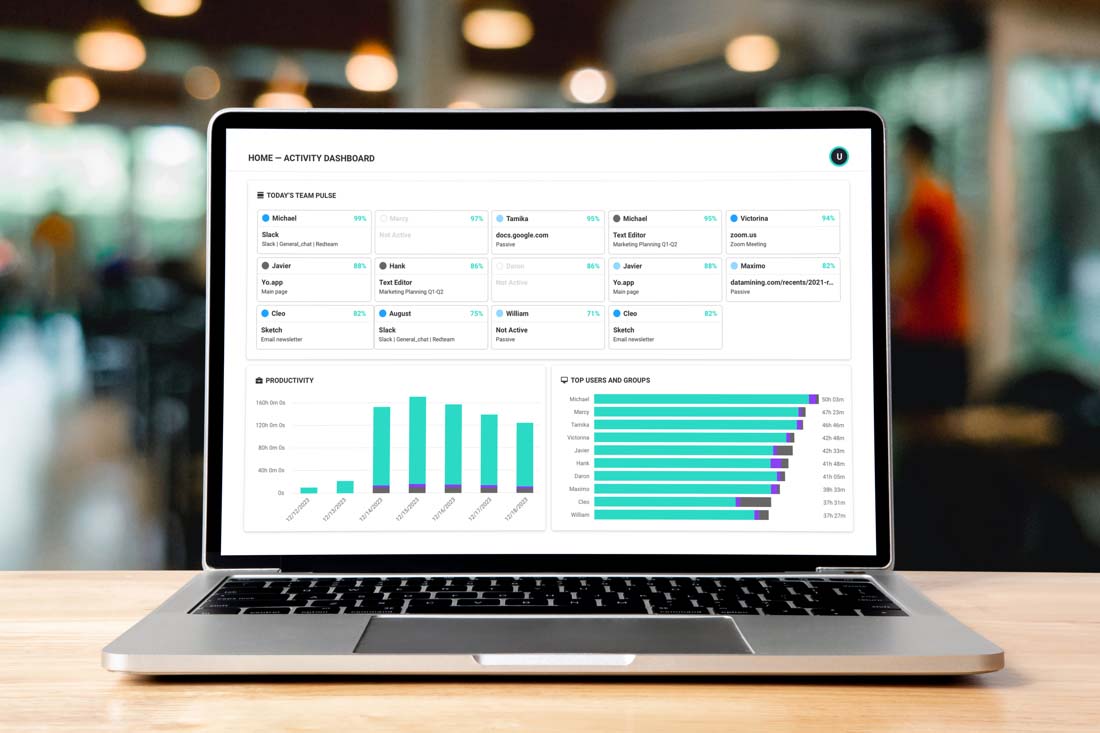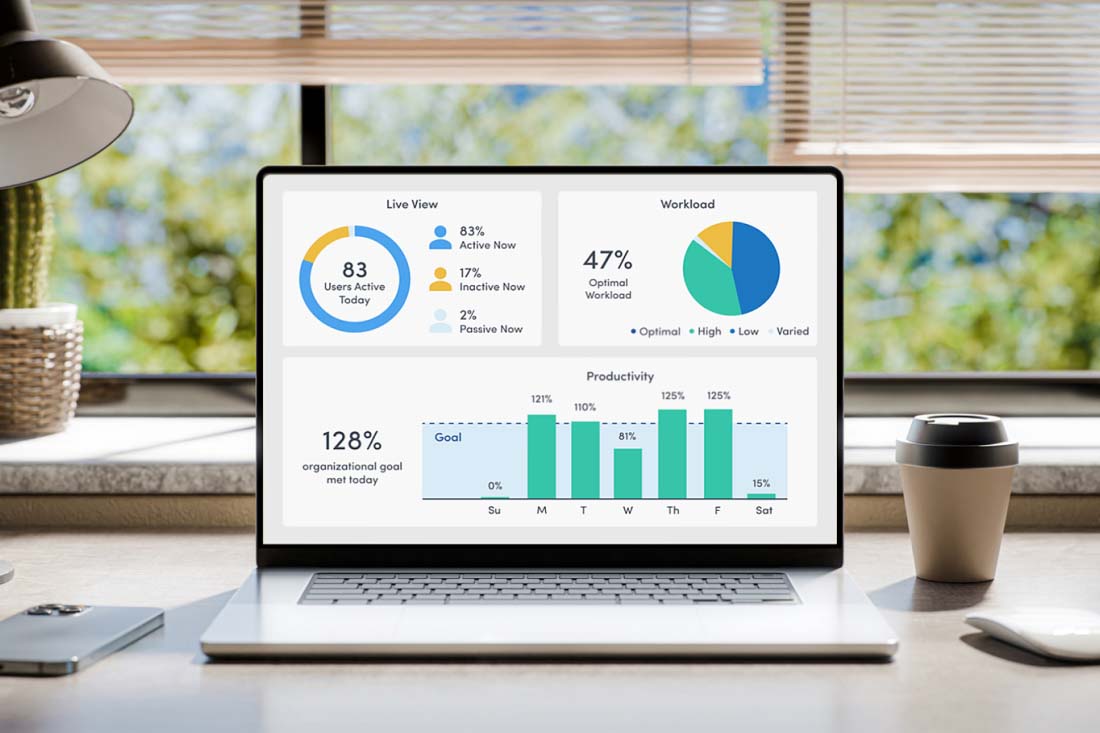Productivity is the baseline for any organization’s competitive edge. But measuring productivity means more than logging how many hours an employee works. Striking the right balance between employee productivity and hours worked is important for businesses and their employees.
Managers and leaders must understand the concept of employee productivity, recognize the factors that influence it and explore the relationship between hours worked and productivity. They must also learn about the science behind work-life balance and strategies that help achieve it.
In this post, we discuss productivity and its relationship to hours worked with tips for increasing workplace productivity without adding hours.
The difference between employee productivity and hours worked
The defining factor of productivity is output – how much meaningful, quality work is accomplished within a period. Hours worked is simply a measure of how long an employee spends working.
To understand the difference, consider an example of two employees tasked with producing 80 units. If one employee takes eight hours and the other takes ten hours, they both achieve the same result but through different means.
The relationship between hours worked and productivity
It’s tempting to equate long hours with increased productivity, but research shows otherwise. The traditional 40-hour workweek has conditioned many business executives to believe that more hours means increased output. However, this isn’t always the case. The key to understanding the relationship between productivity and hours worked is the balance of productive time, which is when a team member is truly focused on their work and able to complete tasks effectively.
The effects of longer hours on productivity
Working overtime can look beneficial on the surface, but research shows working longer hours correlates with many negative effects. A study from Stanford University found that productivity declines when individuals work more than 49 hours in a given week. In fact, they found this decline increases so much after 55 hours of work that working anymore would be pointless, and employees who work 70 hours get the same amount of work done as those working 55 hours.
The World Health Organization (WHO) also reports working long hours leads to an increased risk of cardiovascular diseases (a 42% increase from 2000-2016), stroke (19% increase between 2000-2016) and mental health issues, including burnout. Employees who work overtime are also more likely to have an injury or accident on the job due to fatigue. One study from the National Institutes of Health (NIH) noted that employees in jobs with overtime schedules had a 61% higher risk of injury. Employees who work overtime may also be less engaged than employees who maintain a better work-life balance, which leads to issues organization-wide, including lower morale, lower job satisfaction and reduced productivity.
The effects of shorter hours on productivity
Technology has played a major role in increasing employee productivity, to the point that most employees probably don’t need to work as many hours as previous generations. Many companies are testing the four-day workweek with promising results, even if the employees aren’t working a full 40 hours over those four days. Some pilot studies in Europe showed companies who tried the four-day solution had lower turnover rates and less absenteeism. Employees who work 32 hours a week instead of 40 have reported feeling happier and are more likely to manage their stress, sleep and exercise more, and spend more quality time with loved ones.
According to one study in Iceland, employees who worked fewer hours experienced more than better work-life balance and overall health. They increased productivity and the quality of their services. Employees who get ample rest between shifts and disconnect from work tend to have higher productivity and creativity levels. They’re also more likely to provide better quality work, including improved customer service and innovation.
The effects of flexible hours on productivity
An increasing trend in working culture is providing employees with flexible work arrangements so they are empowered to choose when and where to perform their tasks. According to Gartner, 43% of employees with flexible hours reported they were more productive. Part of this could be attributed to a lack of commute time, which 30% of employees said empowered them to work more productively.
Flexibility and remote work also allow employees to choose where they work, which can increase their ability to focus. The work environment can produce plenty of distractions for workers, but when employees choose where they work, they control their environment and can be more efficient. Other employees may benefit from working based on their circadian rhythms to focus when they’re naturally inclined to and spend other hours doing more mundane tasks or resting.
4 tips to increase productivity in fewer hours
There are many ways to increase productivity in your organization beyond expanding the number of hours worked. Removing barriers to productivity and empowering employees to focus can keep your overtime levels down while your productivity goes up. Here are four ways to increase productivity without adding extra work hours.
1. Provide adequate tools
With the right tools, employees meet deadlines and complete tasks effectively in less time. Updated technology and automation features can also reduce employees’ need to do mundane tasks, which gives them more mental space to be creative and productive. Focus on tools that help employees communicate clearly, collaborate effectively and accomplish tasks, like project management tools, messaging platforms and file-sharing tools.
2. Eliminate unnecessary meetings
Unnecessary meetings drain employee productivity by forcing them to spend time on the meeting and draining company resources. Nearly half of employees report that meetings are the biggest waste of time in the workplace, according to Salary.com. Reducing or getting rid of unnecessary meetings is a surefire way to improve productivity and job satisfaction in your organization.
3. Reduce distractions
Whether your team members work in an office or remotely, it’s easy for distractions to creep in and keep them from being productive. Research suggests employees spend an average of 2.5 hours dealing with interruptions each day, and it takes an average of 23 minutes and 15 seconds to refocus after a distraction. Managers who reduce distractions for their teams see instant benefits including greater productivity, better quality of work and higher levels of satisfaction and engagement.
4. Monitor and measure employee productivity
The first step to boosting productivity is understanding it in your organization. Monitoring and measuring employee productivity empowers you to spot gaps in productivity, whether it’s due to overworking, unbalanced workloads, lack of training or the wrong tools. By tracking productivity, leaders learn what traits or situations contribute to the most productive work environment and can provide solutions to improve overall productivity.
Increase employee productivity with ActivTrak workforce analytics
Finding the balance between employee productivity and hours worked is a key component of any successful business. Understanding what productivity means for your organization, recognizing the relationship between hours worked and productivity and implementing strategies for balancing life and work maximize employee performance while prioritizing their well-being.
Strike the perfect balance between productivity and well-being with ActivTrak’s advanced workforce analytics cloud. Our employee monitoring platform gives you insight into how, when and where employees are most productive while maintaining employee privacy, so you’re empowered to make strategic decisions around tools, policies and working hours. Productivity management and measurement show you patterns in your organization, which lead to a culture of continuous improvement for employee productivity and well-being.
Request a demo to get started or to learn more about how we can help you achieve the ideal work-life balance.





